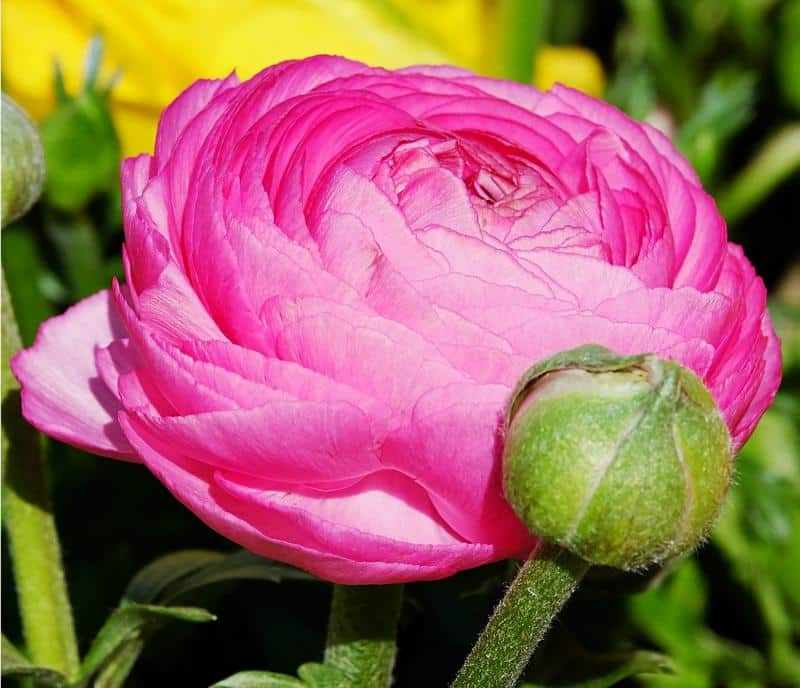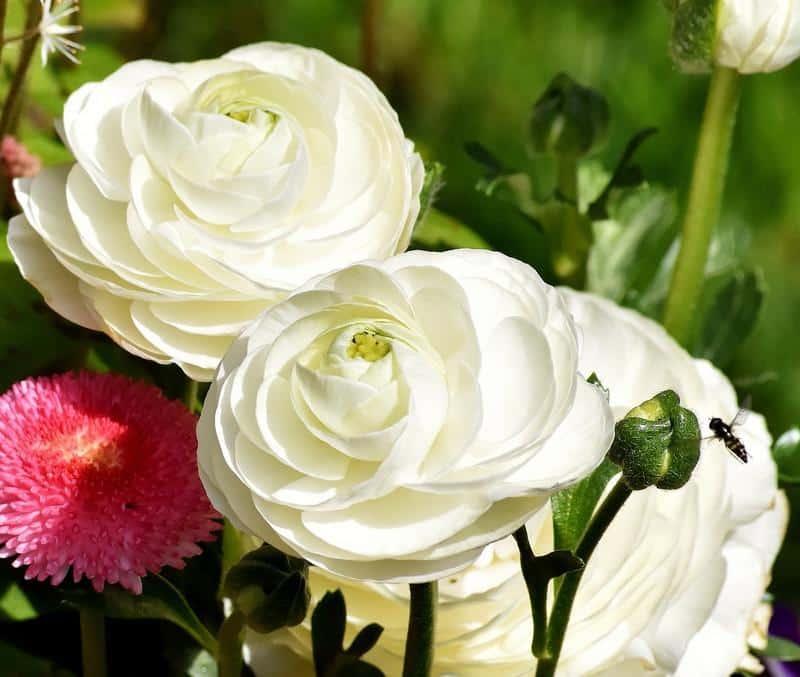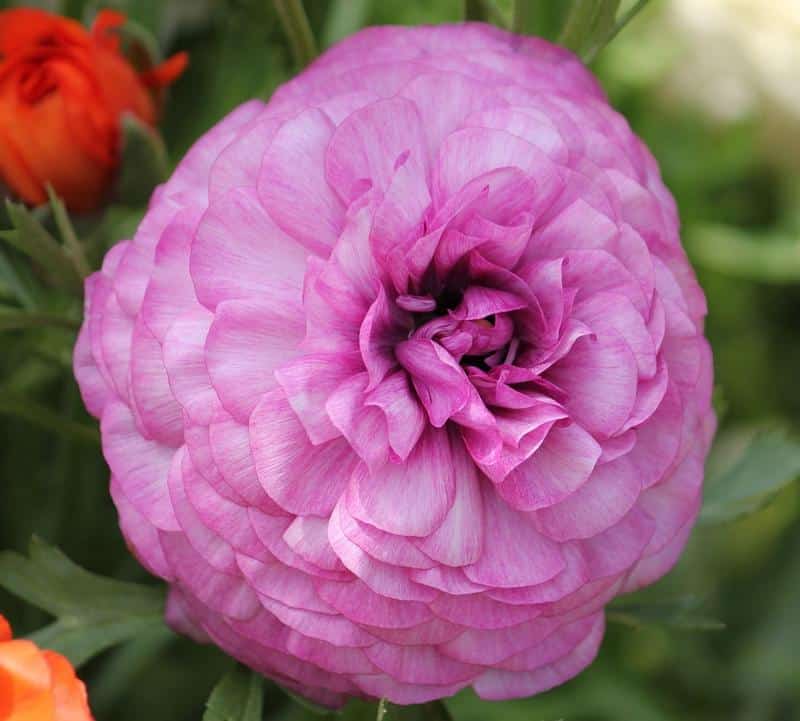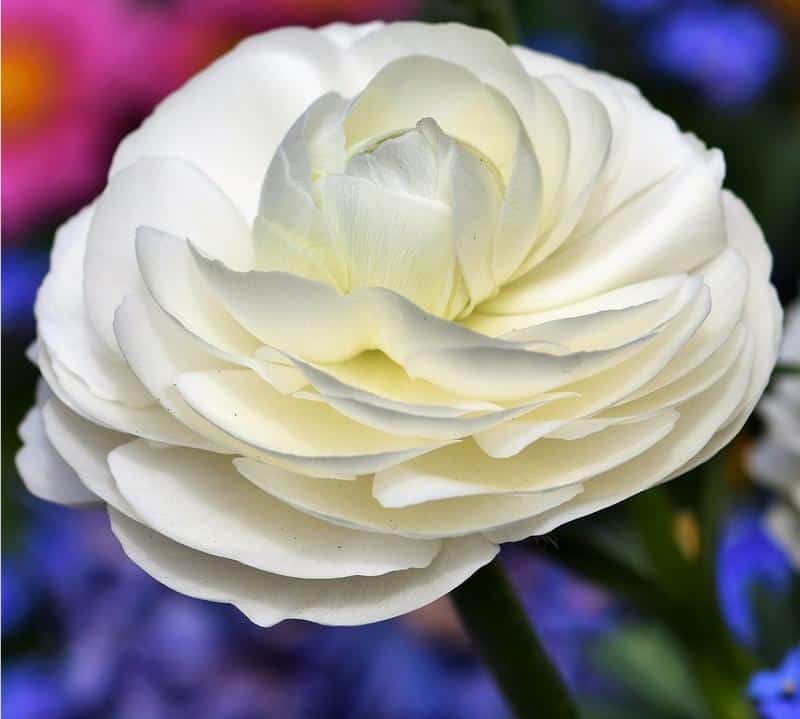Are Ranunculus (Buttercups) Poisonous to Dogs?
Are Ranunculus poisonous to dogs? In this article, we’ll teach you everything you need to know about if Ranunculus are safe for dogs and what to do if your dog ate Ranunculus (also commonly known as Buttercups). We’ll then explain the two commands that will ensure your dog keeps safe around Ranunculus and other potentially poisonous plants.
Next, we’ll cover more things you should know about Ranunculus and dogs, such as how to keep dogs away from Ranunculus using barriers and other methods. Finally, we’ll wrap all of this up by instructing you on how to grow Ranunculus in a home with dogs. Keep reading!
Are Ranunculus Poisonous to Dogs?

Ranunculus are poisonous to dogs. These plants, also referred to as Buttercups, contain an irritant sap and a toxic compound known as protoanemonin, both of which can cause harm if ingested by your furry friends. These bright and beautiful flowers pose a significant risk to dogs.
Is Ranunculus Toxic to Dogs?
Ranunculus is toxic to dogs. All parts of the plant, including the stems, leaves, flowers, and bulbs, are toxic to dogs. The toxicity comes from a compound called ranunculin, which transforms into an irritant oil called protoanemonin when the plant is chewed or bruised.
This can lead to significant discomfort for your pet, and if a large amount is consumed, it may lead to more serious health issues.
Ranunculus Poisoning in Dogs Symptoms
If your dog ate Ranunculus, they may exhibit a variety of symptoms. These can include drooling, vomiting, diarrhea, and weakness. In more severe cases, ingestion can lead to tremors, seizures, or even paralysis.
If you notice any of these symptoms and suspect Ranunculus ingestion, seek veterinary care immediately.
Train the “Leave It” Command
One way to protect your dog from the dangers of Ranunculus is to train them with the “Leave It” command. Here’s a simple way to teach it:
- Hold a treat in both hands. Open one hand to show the treat to your dog.
- When your dog goes for the treat, close your hand and say “Leave it.”
- Once your dog stops trying and pulls away, give them the treat from the other hand. This teaches them that leaving something alone leads to a reward.
Train the “Drop It” Command
The “Drop It” command can also be a lifesaver, especially if your dog has already picked up a toxic plant like Ranunculus in their mouth. Here’s a brief guide:
- Start playing a game of fetch with a toy. Once your dog has the toy in their mouth, hold a treat to their nose and say “Drop it.”
- Most dogs will drop the toy to get the treat. Once they do, give them the treat and praise them.
- Practice this command regularly. It can help make it an automatic response in situations where your dog has something dangerous in their mouth.
While the Ranunculus plant can add beauty to our gardens, it’s not a safe choice for households with dogs. By being vigilant about the plants in your environment and training your dog to respond to critical commands, you can keep your pet safe and healthy.
These commands will get your dog to stay away from Ranunculus, but it’s important to remember that the underlying behavioral issues (curiosity, anxiety, boredom, etc.) that were causing all of this to begin with will still be present. And until you address those, any positive changes you see are only going to be temporary.
“Well, how do I make these changes last?”
By getting your dog to truly choose to follow your direction, that’s how. I tried many times to write out how you can do that before deciding it made more sense to just link you to the free video series that explains it better than I’d ever be able to.
The series is by a man named Dan who is one of the world’s leading dog obedience trainers. In it, he teaches you how to put an end to things like your dog not staying away from Buttercups and all other misbehavior using his fast and easy-to-follow methods.
In the first video, Dan will reveal to you why the two most common methods of dog training only doom you to failure. You can watch the video now by clicking here. Follow the proven system he’ll show you in his series and you’ll never have to spend another second worrying about your dog eating Ranunculus ever again!
Are Ranunculus Safe for Dogs?

Ranunculus are not safe for dogs due to their sap, which contains protoanemonin, a toxic substance. When ingested, this substance can cause irritation and gastrointestinal distress.
These vibrant flowers, often known as Buttercups, though visually appealing, pose a threat to our curious canines and should be kept out of their reach. Given the potential harm they can inflict on our pets, exercising caution is of utmost importance.
My Dog Ate Ranunculus, What Do I Do?
If you suspect that your dog ate Ranunculus, don’t panic. Remove any remaining plant material from your pet’s mouth, if possible, and monitor them closely for signs of poisoning. These may include drooling, vomiting, diarrhea, weakness, or in severe cases, tremors or seizures.
If any of these symptoms appear, it’s important to get your pet to a vet as soon as possible for proper treatment.
Dog Eating Ranunculus: How to Prevent
Prevention is always the best form of protection when it comes to potential dangers for our pets. To prevent your dog eating Ranunculus, the most effective strategy is to avoid having these plants in your home or garden altogether.
If you have these plants and can’t remove them, consider creating a barrier to keep your dog away from them. Training your dog to understand commands like “leave it” or “drop it” can also be incredibly beneficial. Learn both now in the first section.
What Attracts Dogs to Buttercups?
Dogs may be attracted to Buttercups due to their bright color and the curiosity that most dogs have. The scent of the plant might also be appealing to some dogs. However, it’s important to note that ingestion can lead to Buttercup poisoning, which can cause discomfort and health issues in dogs.
In conclusion, while Ranunculus are charming and can brighten up any space, they are not safe for our canine companions. If you suspect your dog has ingested any part of a Ranunculus plant, immediate veterinary care is essential.
Prevention, through either removing these plants or restricting your dog’s access to them, is the best way to keep your pet safe.
You should get this taken care of now as it will also keep your dog safe around other types of plants. You then won’t have to stress about things like are Coral Bells toxic to dogs, are Camellias poisonous to dogs, are Dahlias poisonous to dogs, or are Peony poisonous to dogs.
Buttercups and Dogs

Buttercups, also known as Ranunculus, pose a significant danger to dogs due to their toxic compound called protoanemonin. This plant should be kept out of reach of our four-legged friends to ensure their safety.
How to Keep Dogs Away From Ranunculus
Buttercups are undeniably appealing with their vibrant colors. However, when dogs are around, it’s crucial to take measures to keep them away. One effective method is the use of barriers. Garden fencing or plant cages can keep curious dogs at bay.
These barriers don’t need to be visually unappealing – there are many stylish options available that can complement your garden aesthetic.
Beyond physical barriers, consider placing these plants in raised garden beds or pots that are out of your dog’s reach. Remember, your dog’s safety is paramount, and these measures can help ensure they stay away from potentially harmful plants.
Alternative Plants Safe for Dogs
If you’re a dog owner who loves gardening, it’s important to consider dog-safe alternatives to Buttercups. Flowers like sunflowers, roses, or petunias are safe options that also add a vibrant touch to your garden.
Always ensure to research any plant’s safety before adding it to a space accessible to your dog.
The Importance of Training
Training your dog to understand commands like “leave it” or “drop it” can also be very useful in keeping them safe. Learn both now in the first section. This allows you to control your dog’s actions when they show interest in plants like Buttercups that could be harmful to them.
In summary, while Buttercups are beautiful flowers, they can be harmful to dogs if ingested due to their toxic substance, protoanemonin. It’s important to keep these plants out of your dog’s reach and consider safer alternatives for your garden. Moreover, training your dog can also be an effective measure in preventing them from ingesting harmful plants.
How to Grow Ranunculus

Ranunculus, also known as Buttercups, can be grown by planting bulbs in well-draining soil, preferably in a sunny location. These vibrantly colored flowers, while not safe for dogs, can bring a burst of color to any garden when properly cared for.
Do Ranunculus Bulbs Multiply?
Ranunculus bulbs or tubers can multiply. After planting and growing one season, they can produce additional tubers that you can leave in the ground or dig up, divide, and replant. This characteristic makes Ranunculus a cost-effective addition to your garden, but remember to keep them out of reach of dogs.
How to Grow Ranunculus in Pots
Ranunculus can be grown in pots, which is a great way to control their environment and keep them away from pets. Start by choosing a pot with good drainage and fill it with a high-quality potting mix. Plant the bulbs with the “claws” facing downwards, cover with soil, and water thoroughly. Place the pot in a sunny location for the best results.
Do Ranunculus Come Back Every Year?
Whether Ranunculus return each year depends on the climate. In warmer climates (USDA hardiness zones 8-10), Ranunculus can be treated as perennials and left in the ground to return year after year. In cooler climates, however, the bulbs need to be dug up in fall and stored indoors over winter.
How Long Do Ranunculus Bloom?
Ranunculus typically bloom in late spring and can continue to produce vibrant flowers for six to seven weeks, sometimes even longer with proper care. Regular watering, deadheading, and a balanced fertilizer can all help prolong the blooming period.
How Tall Do Ranunculus Grow?
Ranunculus can reach varying heights depending on the specific variety and growing conditions, but typically they can grow between 12 to 24 inches tall. They make a striking addition to any garden or pot, just remember to keep them out of reach of dogs.
Do Ranunculus Need Full Sun?
Ranunculus prefer full sun but can tolerate partial shade. Six to seven hours of sunlight per day will yield the best blooming results. Make sure the soil drains well, as standing water can lead to rot and other plant diseases.
In conclusion, Ranunculus are a striking addition to any garden or pot, offering a vibrant splash of color. Despite their toxicity to dogs, with very careful precautions and care, they can be a safe and beautiful part of your home’s green spaces.
Always remember to plant in a sunny, well-draining area, and keep them out of reach of your canine companions. Learn the commands you’ll need to ensure your dog’s safety around them by going back to the first section now.
I’m sure it’s good to know how to work with Ranunculus and dogs now, so I’ll let you get going on things. Good luck with all of this, and thank you for reading our article “Are Ranunculus (Buttercups) Poisonous to Dogs?”





